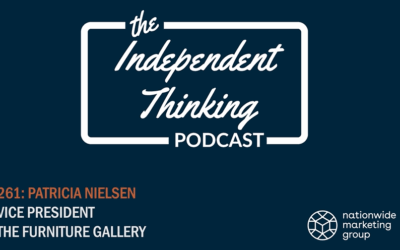Customer service has the power to make or break a business.
Yet often this term — customer service — can feel like a generic catchall for various responsibilities and roles. And while it is a function that impacts every employee in a workplace, it is one that should be approached with intention.
Every interaction or touchpoint with a shopper — whether online or in person — is an opportunity to highlight how your business treats its customers. That is the core of customer service.
In recent years, you may have heard alternative terminology and titles given to the concept of customer service or to the department and employees responsible for providing it. These names include customer experience (or CX), customer advocacy, customer success, client support, service desk, support agent, and even happiness guru.
While some of these names correlate with a specific model of customer service, the number one priority is not so much what you name your department or strategy as it is how you live it out. In other words, how do you make your customers feel? Because, at the end of the day that is what your customers will remember and what will set your business apart from the competition.
How do you achieve this level of differentiation with your customer service efforts? It starts with intention and personalization.
Let’s dive into six key actions to help you get started today.
Make Your Customers Feel Heard
Listening goes a long way toward validating customers and making them feel valued — both in positive and negative situations.
While the natural response is to immediately diffuse the problem or answer a question as quickly as possible, that often limits the power of listening. It is far too easy to jump to conclusions after hearing just one sentence when there is likely more to the story.
Give your customers time and space to say everything they need to say before you respond. Interrupting, even with good intention, is likely to leave them feeling unheard or misunderstood.
Acknowledging feelings and frustrations can also help to soften a challenging situation before you dive into defense or fix-it mode — once you let them finish, of course.
At a basic human level, people simply want to know that they matter. Listening with the intent to understand is a service most people won’t soon forget.
Look for Patterns
Do you find that customers often ask similar questions or offer the same suggestions, over and over? Pay attention to those trends. While you can’t please everyone, consistent feedback on the same topic could point to an underlying issue or gap in what your business currently offers.
Addressing common concerns and inquiries with a more permanent solution is a sure-fire way to grow customer loyalty and attract new customers with similar preferences.
Ultimately, this goes back to listening and making the people you serve feel heard.
Read Between the Lines
What are your customers really saying?
Some people struggle to articulate their thoughts. Others may want to avoid conflict by softening their words. And then there are those who react with emotion instead of voicing the root cause. In each of these cases, it is important to look beyond the surface level message to what has gone unsaid.
The customer who casually asks about your return policy is probably worried about buyer’s remorse and could also benefit from details about warranties or product protection options.
The shopper who complains that your prices are too high may be concerned that lower priced items are of lesser quality. Better understanding their must-haves and overall criteria could pinpoint a mid- or even entry-level product that still meets their quality standard.
Or maybe a potential customer is frustrated they keep missing your sales. Aside from being price-conscious, they might really be wishing for a better way to stay informed — which could be as easy as adding them to your email or mailing list!
Don’t have one? Our digital advertising team can help!
Anticipate Customer Needs
Along with reading between the lines, learning to anticipate a customer’s next question — before they ask it — is a subtle way to show you are listening and seeking to understand. And it’s not as difficult as it might sound. Previous customer interactions can offer insight to make educated guesses.
There is magic in giving a customer the feeling that you read their mind. Not only does it show that your business “gets” them, but it also positions you and your team as the go-to experts who know your products inside and out.
Encourage Feedback
Still, it is impossible to anticipate every customer’s individual needs, which is why it is vital to offer a simple way for people to provide you with feedback. Place a suggestion box in a well-trafficked area of your store. Provide a phone number or email address at the bottom of your receipts or on your website. You can even be proactive by asking customers to take a quick survey to help you improve.
Creating an atmosphere of open dialogue not only builds trust with your customers, but it also helps to prevent them from taking their frustrations online in the form of a negative review on Google or social media.
And when you do receive feedback — good or bad — be sure to follow up with the person who shared it. Thank them for taking the time to help improve your business. Make them feel needed, valued and part of your brand story.
Celebrate Wins with Your Customers
Look for opportunities to be part of your customers’ stories, too.
Did a customer buy a new house? Expand their family? Are they celebrating an anniversary or birthday? Paying attention to major customer milestones and celebrating with them is a mighty way to encourage loyalty.
It is far more genuine to show that you care with actions than it is with words — specifically actions that prove you pay attention and aim to personalize each experience.
Demonstrate that what’s important to them is important to you and make it memorable.
Conclusion: Don’t Be Average
Inevitably, we all regularly find ourselves on the receiving end of customer service. And — if we’re being honest — we tend not to remember the okay experiences, but the ones that were either terrific or terrible.
Going above and beyond for a customer may sound cliche, but in a world where average is too often the norm, the potential to WOW your customers can be as simple as practicing these six key tips.
And don’t forget the golden rule: Do to others as you would have them do to you.




